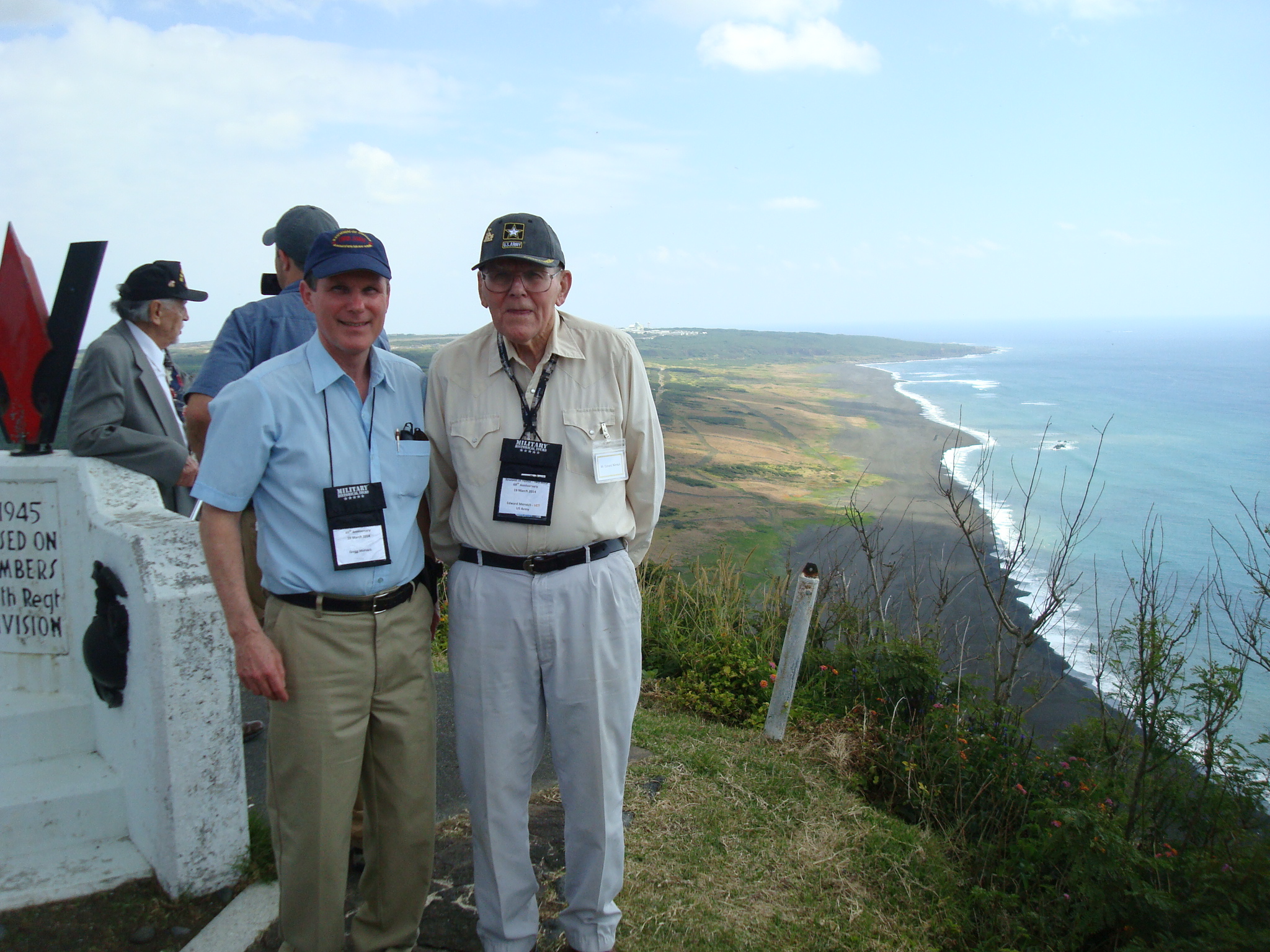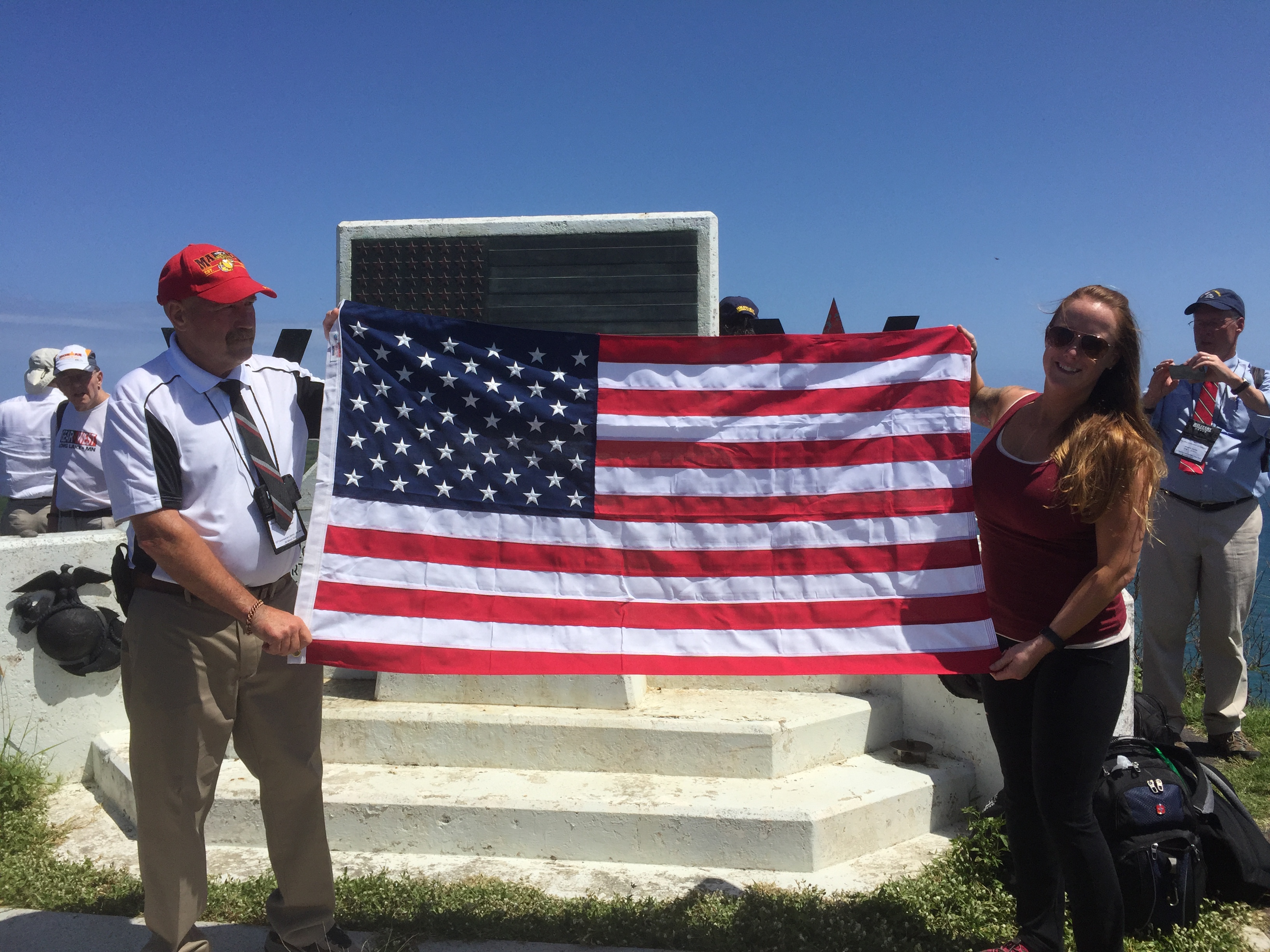Blog 02/23/21 - A Salute to the Flag Raisings on Mount Suribachi
02/23-21 – A Salute to the Flag Raisings on Mount Suribachi by Maj Fred Lash, USMC(Ret): The following account of the flag raising on Mount Suribachi, Iwo Jima was written by Keyes Beech, a Marine Corps Combat Correspondent, who covered the Fifth Marine Division on Iwo Jima in February 1945 and won a Pulitzer Prize in 1951 for his reporting on the Korean War. His works, along with five other ‘CCs,’ who covered the other four Marine divisions, were published in the book, “Uncommon Valor: Marine Divisions in Action” in February 1946, 75 years ago today exactly a year after the flags went up on Iwo Jima.
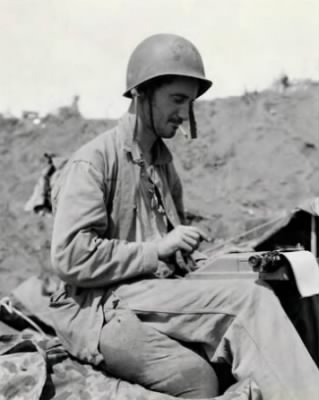
“Every man on the island had been waiting for Suribachi to fall. So long as the Japs held Suribachi, they held a psychological as well as material advantage, for the chunk of volcanic earth and rock had become a symbol of the enemy’s resistance. Men fighting with their backs to Suribachi could not fully focus their attention on the drive to the north.
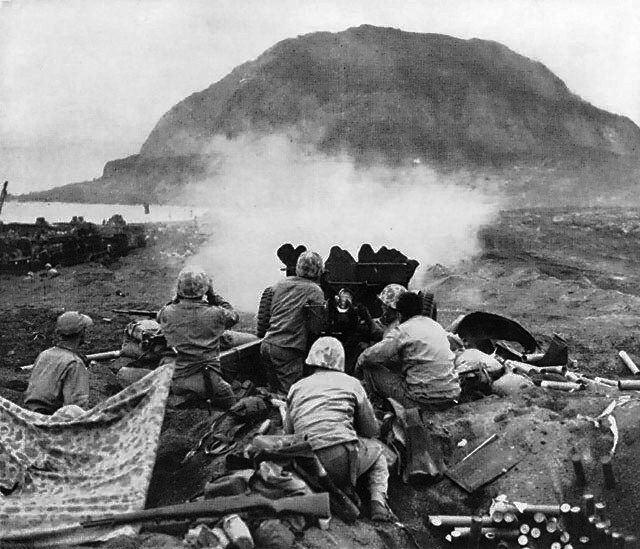
On the morning of February 23rd, the volcano was ready to be climbed. Led by Sergeant Sherman Watson, a husky 22-year-old Iowan, a four-man patrol from Company F went almost to the top. With him were Privates First Class Ted White, of Kansas; George B. Mercer, another Iowan; and Louis C. Charlo, a Flathead Indian from Montana. The patrol met no resistance.
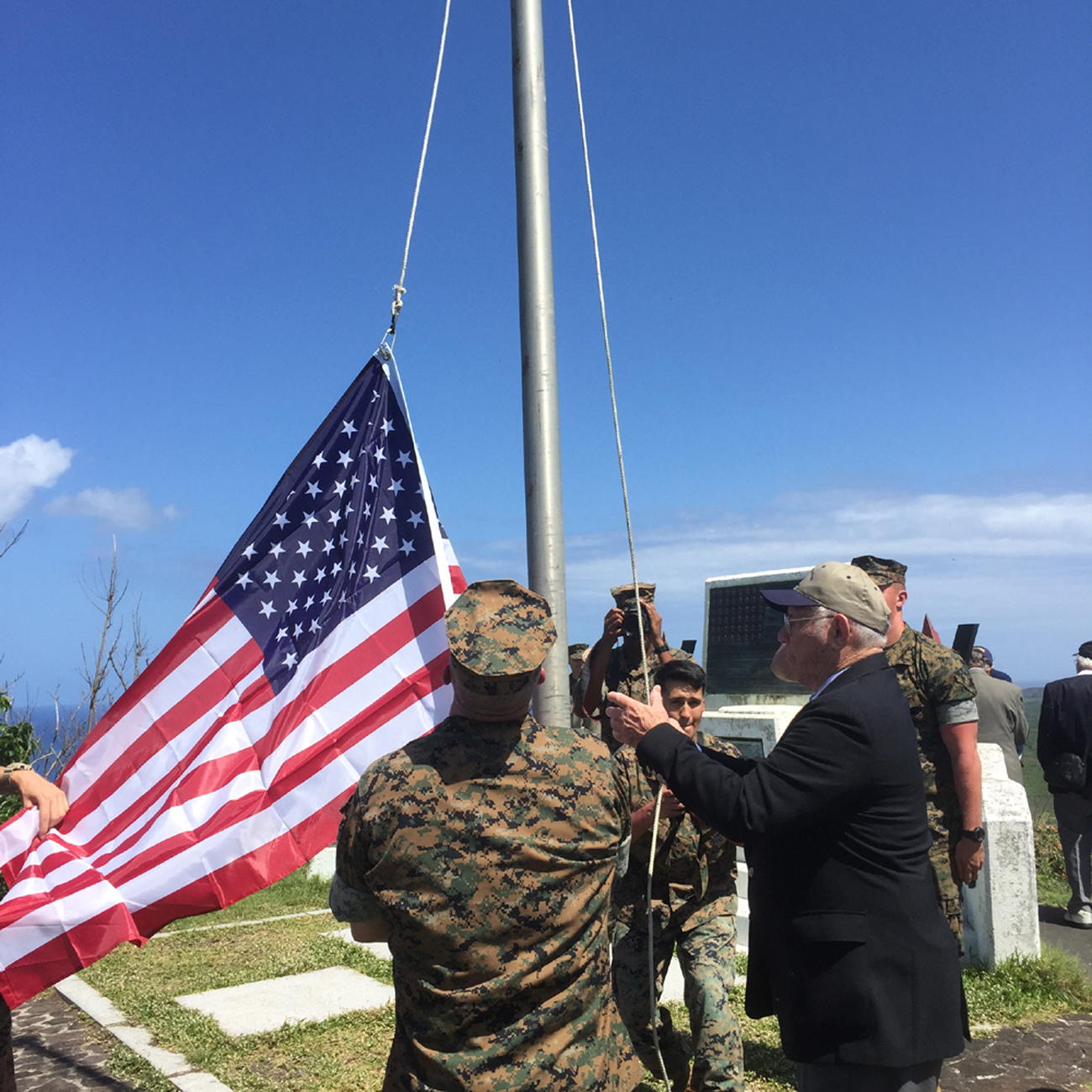
Another patrol, forty men from Company E, was on its way up. At the head if the column as it wound its way single file up the face of the volcano was Lieutenant Harold George Schrier, of Richmond, Missouri, who had won fame as a Raider in the Solomons with one-man reconnaissance in enemy territory.
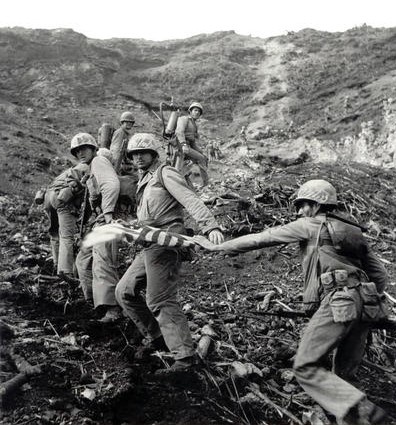
Behind him was Platoon Sergeant Ernest I, Thomas, of Tallahassee, Florida, who had taken over his platoon after its leader had been wounded and guided it through some of the most bitter fighting on Iwo. Schrier had with him a small flag which his battalion commander, Lieutenant Colonel Johnson had instructed him to “put up on top of the hill.”
Schrier and his men drew no fire, although exposed as they were, a single machine gun might have wiped out the entire patrol. When they reached the rim of the crater, they found a battery of heavy machine guns with ammunition stacked alongside, but no Japs.
Then, as Schrier, Thomas, and Sergeant Henry O. Hansen of Somerville, Massachusetts, raised the flag, a Jap emerged from a nearby cave to hurl a grenade. Two men stood by to protect the flag while others went to attend to the Jap. Down inside the crater there were more Japs to be killed.
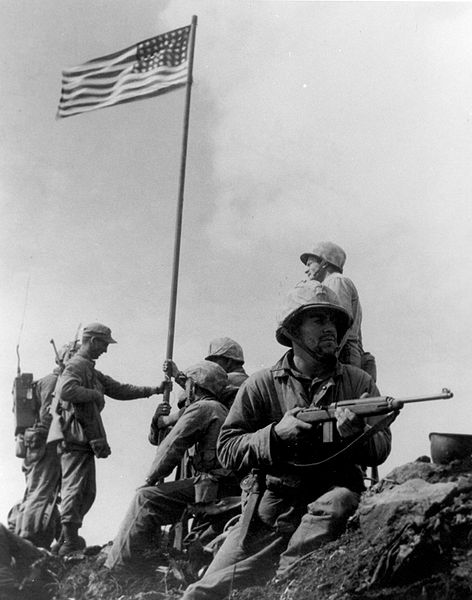
Down below, men who watched the progress of the patrol, stood up in their foxholes and cheered as they saw the tiny Stars and Stripes go up. Some wept without embarrassment. But the men atop the volcano had no time to pause for sentiment.
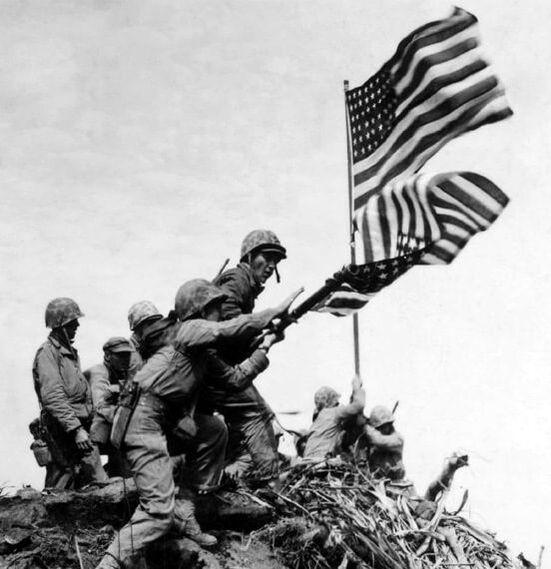
Three hours after the first flag went up, Lieutenant Colonel Johnson sent up another flag—four and a half by nine feet—one that could be seen all over the island and by men on the ships which lay offshore. With the detail that carried the larger flag to the top of the volcano went Associated Press photographer Joe Rosenthal.
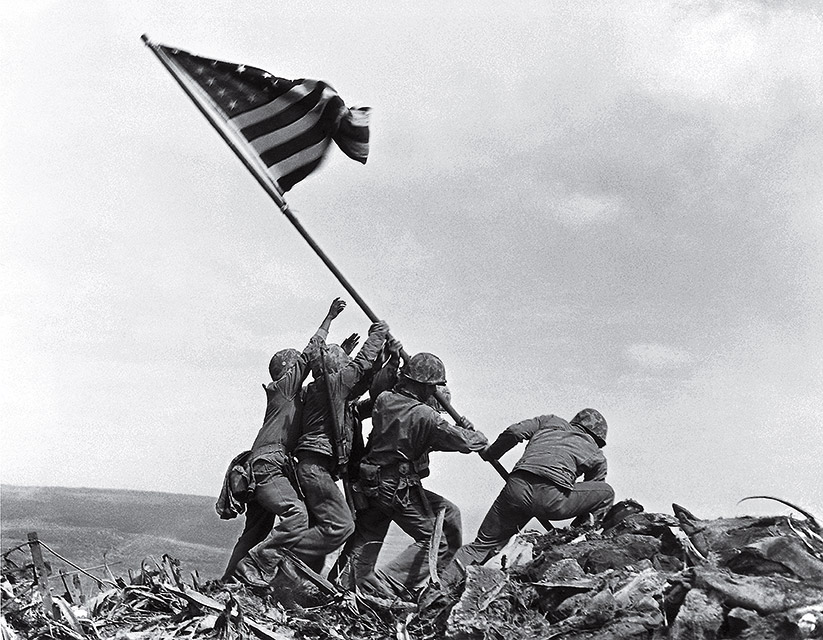
Rosenthal’s picture was not posed. As Rosenthal himself said, “I just happened to click the shutter at the right time.”
https://www.miltours.com/index.php?route=product/category&path=24

